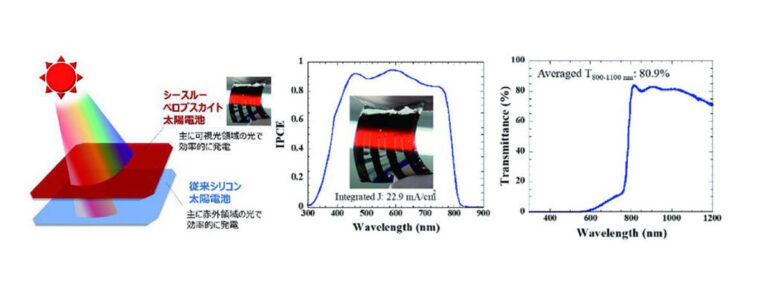Image: Enecoat Technologies
EneCoat Technologies, a PV technology spin-off from Kyoto University, has announced that it has achieved an energy conversion efficiency of 30.4% in a four-terminal perovskite-silicon tandem solar cell developed in collaboration with Toyota Motor Corporation. Ltd.
The company did not say whether the result was confirmed by an independent third party.
The tandem cell uses a flexible perovskite top cell with 22.4% efficiency and 81% infrared transmittance, as well as an unspecified crystalline silicon solar technology for the bottom device.
“The conversion efficiency values obtained in this development have been measured in a small area at the cell level, and we will continue to develop large-scale solar panel modules to achieve the practical application of high-efficiency solar cells that will bring benefits to users,” said the manufacturer in a statement, without providing further technical details.
EneCoat is pursuing a range of applications for its thin-film perovskite technology, which it manufactures in a proprietary low-temperature deposition process, such as applications requiring high efficiency in low light, as well as outdoor PV applications requiring lightweighting. flexible solar panels.
The modules had an efficiency of 19.4% as of March 2023, as reported by pv magazine at the time.
This content is copyrighted and may not be reused. If you would like to collaborate with us and reuse some of our content, please contact: editors@pv-magazine.com.
Popular content



